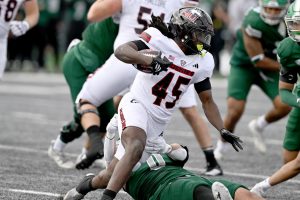Motorcycle daredevil with a cause
February 17, 2005
Evel Knievel was one of the most heroic, death-defying daredevils to ride a motorcycle, but he had to start somewhere.
Robert Ritter, project director of the NIU Motorcycle Safety Project has been with NIU Outreach for eight years and has been riding motorcycles for 48.
His program offers two riding courses: a basic rider course and an experienced rider course.
“[The basic rider course] teaches individuals all the basic knowledge and skills for how to ride. It teaches some defensive driving technique and mental strategies for riding a motorcycle. The four basic skills are driving in a straight line, shifting, use of the clutch, braking and turning,” Ritter said.
The program has operated under the 402 funds for many years.
“We operate under a grant and it is a user-paid program. Its not a tax payer program,” Ritter said.
In 1983, the State Cycle Rider Safety Training Program Act was passed and the funding was developed through The Department of Transportation.
Some apparel such as helmets, boots that cover your ankles, heavy material pants and eye protection are requirements for the class.
The program also provides the training motorcycles.
“If somebody is interested in learning how to ride a motorcycle and they have never done it before, they don’t have to go out and spend a lot of money buying a motorcycle to find out. They can take this course and find out maybe motorcycles aren’t for them because they aren’t for everybody,” Ritter said.
The classes are restricted to 12 students per class due to safety issues and a total 22 hours of training during a one-week period. Courses run from April to October and registration for both courses at the NIU training site is online Feb. 21 at 12:01a.m. A $20 registration deposit reserves your place in the class.
“We have gone from 156 courses to this year offering 301 courses – but we still can’t meet the demand,” Ritter said.
Riders must be 16-years-old to participate in this class which will qualify riders for an L-Class license and allow them to ride anything up to 150C motorcycle.
The riders have to complete a knowledge and skill test. The knowledge test must be passed with at least an 80 percent score. Once class members have completed both tests; a completion card is granted by the Secretary Of State.
There is an element of risk in everything you do, but in motorcycle riding there is an even greater risk, especially when it comes to riders who do it strictly for stunts or the thrill of it.
“The worst part of riding a motorcycle is that you only have two wheels and you don’t have a cage of protection around you. Doing some of the things these guys want to do increases the risk,” Ritter said.






